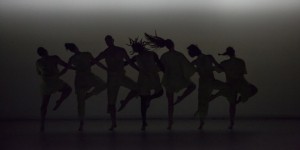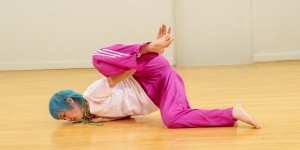IMPRESSIONS: Stephen Petronio Company in “Breath of the Beast” at NYU Skirball

Choreography & Concept: Stephen Petronio
Original Score & Performance: Jennifer Koh
Dancers: Larissa Asebedo, Liviya England, Jaqlin Medlock, Tess Montoya, Ryan Pliss, Nicholas Sciscione
Guest Artist: Jerron Herman
Understudy: Deniz Erkan Sanack
Costume Design: Michelle Rhee
Lighting Designer: Ken Tabachnick
Production Manager: Joe Doran
Stage Manager: Jessie Ksanznak
Sound Engineer: Paul Vazquez
With over forty years of dancemaking under his belt, Stephen Petronio treads the boundary between renegade and establishment. Long recognized for his cutting-edge movement language and slick aesthetic, his company has shifted from a single-choreographer model toward a repertory platform to showcase the historical lineage and emerging future of modern and contemporary dance. As a choreographer, Petronio clearly still has creative energy to spare — a fact that allows his own oeuvre to span past, present, and future.

The choreographer’s latest creation, “Breath of the Beast,” lets us into his world in an intimate (if sometimes contrived) look at his creative process. Joining the company’s six superb artists are guest artist Jerron Herman and violinist Jennifer Koh, who plays her commissioned score live on stage. Petronio himself acts as our emcee for the first portion, which operates almost as a lecture demonstration or prelude to a more formally-staged work. While this format draws the audience into personal dimensions of the artist’s worldview and methods, it does little to illuminate the merit of the work itself, which stands firmly on its own.
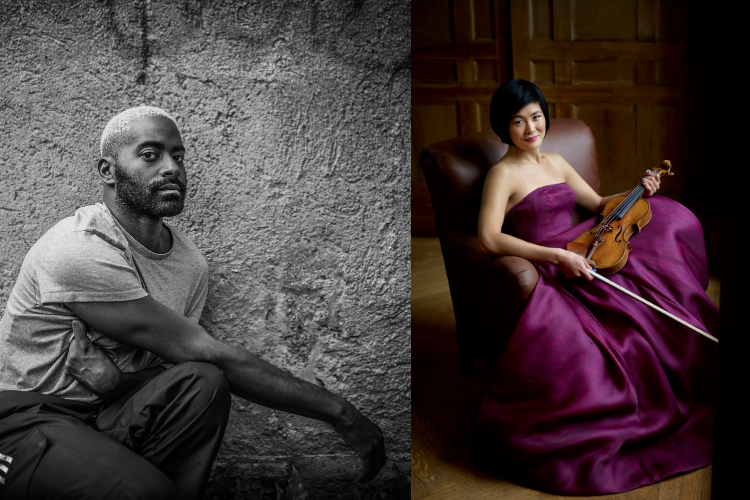
A casual opening finds dancers trickling onto the silent stage in practice clothes. The stage itself is in its “practice clothes” too, with the grid descended upstage and the house and work lights still on. Herman takes the space first, drawing out juicy slides and wide arm swings as he explores spiraling dimensions guided by the weight of his head. As the dancers accumulate, they noodle around to warm up their bodies and mark snippets of material alone and in pairs. Their relaxed tone and alternately playful and introspective demeanors bring into focus the depth of their kinesthetic knowledge and the rigorous precision of their craft.
Petronio bursts on the scene to break the spell and charge the group with fresh energy through improvised games of “reading” and copying movement. This “playback” method is the keystone of Petronio’s creative process, which he explains as a sequence of improvising, interpreting, building variations, and remembering through his body and the dancers’ bodies. The word “collaboration” is never used, though the individual creative voices and physical idiosyncrasies of the artists are undoubtedly essential to the process of fleshing out improvised material into fixed choreography.
In addition to the nuts and bolts of his process, Petronio also dives into his motivations to frame (or justify) his work’s non-narrative yet highly emotive tone. “Breath of the Beast” draws particularly from traces of pandemic-era affective states and spatial restrictions that illuminate the dimensions of dance as a source of solace, pleasure, and community. The choreographer channels his frustrations — narrated in a long list of “things that get under my skin” — through the dancers to find solutions, temporary or otherwise, to metaphysical and quotidian problems. And with that, the grid rises, the house lights dim, and we venture forth into the dance.
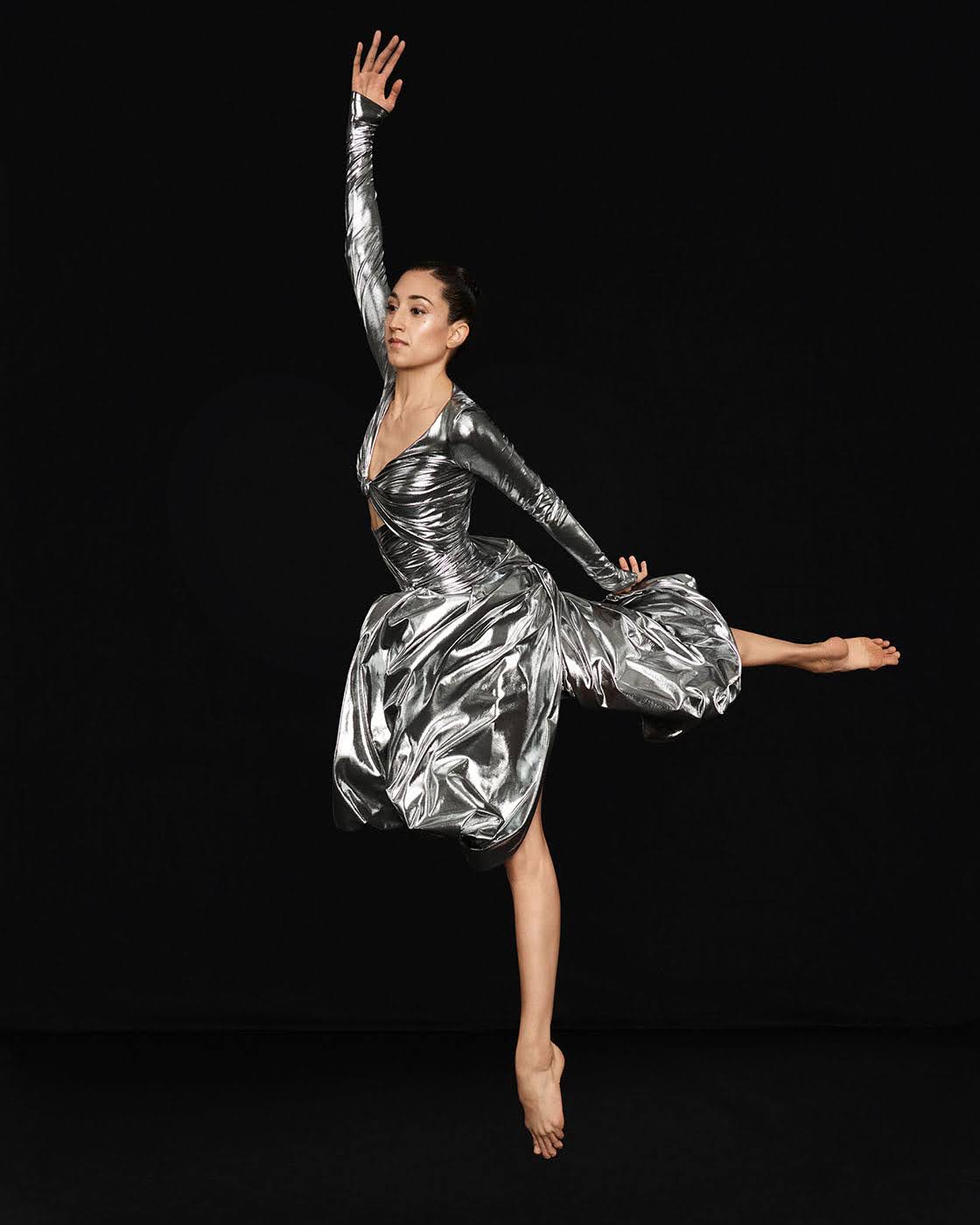
Now clad in Michelle Rhee’s slinky silver costumes, the dancers fully inhabit a dazzling spectrum of daring boldness and intricate delicacy. In a continual cascade of solos, duets, and trios, they move generously through multiple simultaneous vectors and tones, arms slicing like blades as they splay wide arabesques and dissolve into languid loops tossed off with casual virtuosity. Overall, the dancers are excellent in their measurements of containment and expansion and the reactive tactility of their passing encounters. They are hard and soft, curiously contemplative and firmly in control: Larissa Asebedo explores confidently but never quite arrives, slipping tantalizingly away; Liviya England is frank and sensual; Ryan Pliss carves through space with limbs like expertly-aimed darts; Jaqlin Medlock tests the limits of sharpness and refinement. The density of their movement material calls for relatively simple stage configurations, the most striking of which is a slowly rotating line of simple postures that shifts from vertical to horizontal and back again, revealing each time new perspectives on form, silhouette, and juxtaposition.
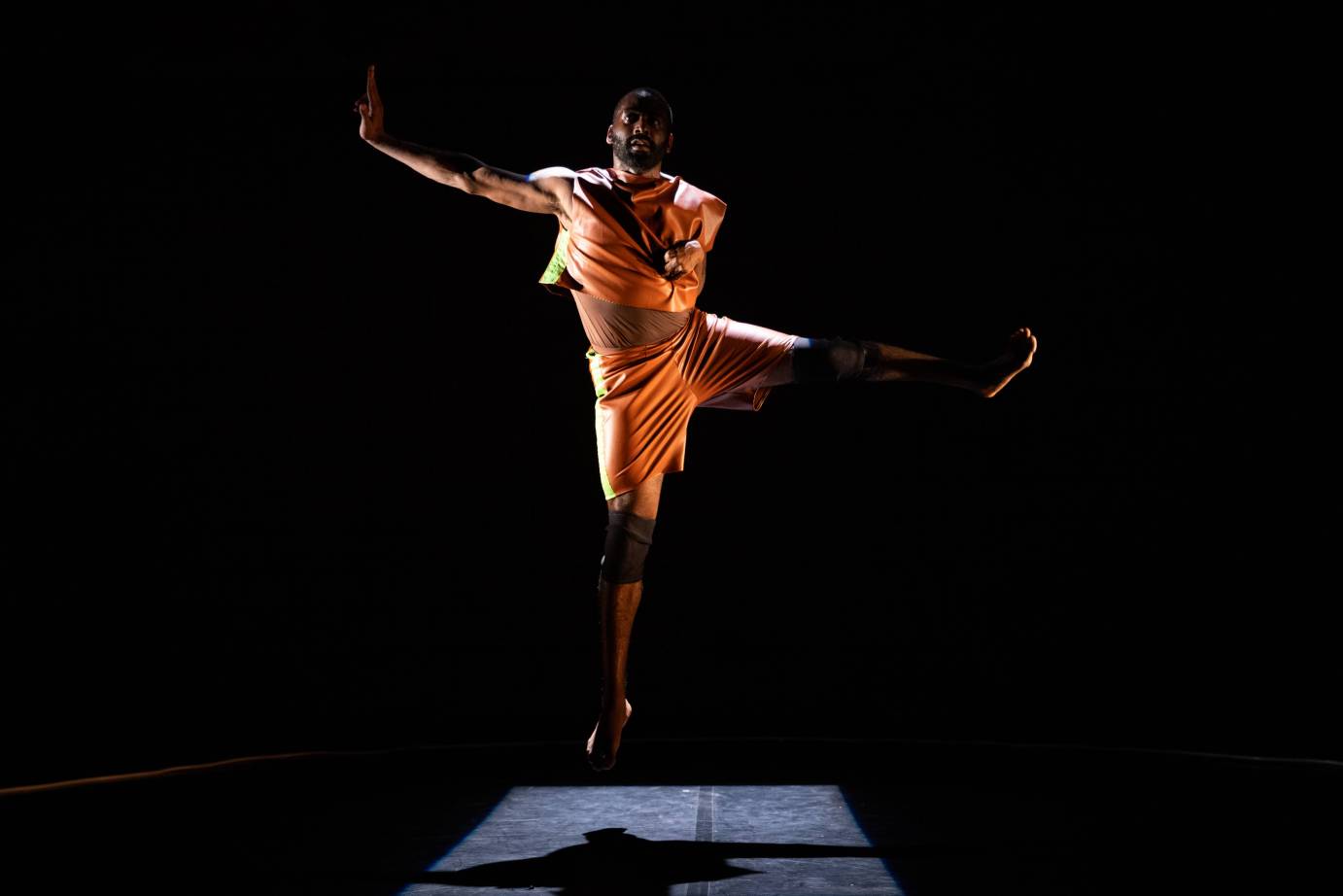
The movement, like the music, stays within a relatively narrow energetic range for the Petronio Company’s ensemble portions that bookend an extended solo for Herman. Here the mood shifts markedly from Koh’s nonmetric field of tense, short plucked and bowed chords backed by digital sounds to a softer, more melodic tone to reflect Herman’s full-bodied expression and gestural phrasework. Herman hypnotizes as he morphs seamlessly between sculptural poses, geometric articulations, and vertiginous falls, eating up space with authority and abandon in a focused, ecstatic flow state. He relishes every last inch and degree of movement, yet he remains isolated—the work’s composition misses a golden opportunity to put the power of Herman’s disabled aesthetic and virtuosity into conversation with the Petronio ensemble. This is particularly quizzical given Herman’s long-demonstrated and lauded capacity to integrate into and amplify ensembles of disabled and nondisabled dancers.
As the ensemble returns to try on more material, they move from postures of challenge into an ethereal realm of sound and movement. They’re angels descended to earth, conduits for our shared humanity, and radiant artists in their own right. Petronio may stamp the work with his signature, but the dance is all theirs.





